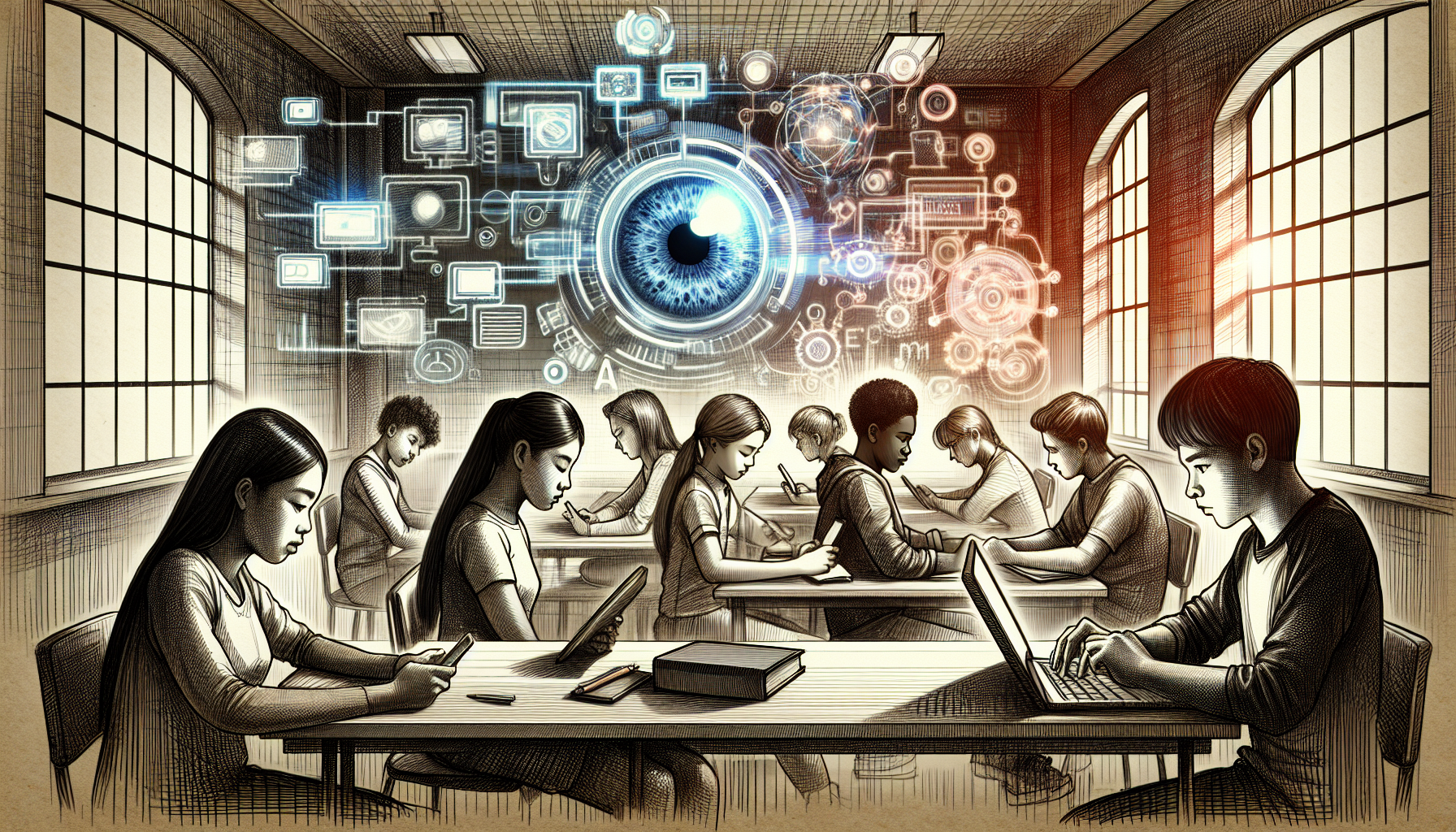# AI in School Surveillance: Safeguarding or Overstepping?
Introduction: Overview of AI Surveillance in Schools
/>
The implementation of Artificial Intelligence (AI) in school surveillance systems is a growing trend that raises significant questions about the balance between safety and privacy. As schools increasingly adopt these technologies, it is crucial to understand not only the capabilities of AI in enhancing security measures but also the potential implications on privacy and ethical concerns.
The Technology Behind AI Surveillance: How It Works
/>
AI surveillance involves the use of sophisticated algorithms that can analyze video footage in real-time to detect unusual behavior or potential threats. This technology typically employs advanced machine learning models, including deep learning, to interpret vast amounts of data from school cameras. AI systems can be trained to recognize specific types of behavior, such as unauthorized entry or aggressive actions, and alert school authorities instantly.
These systems integrate with existing security infrastructure, enhancing their effectiveness by providing more precise and faster responses compared to traditional surveillance methods. The key components of AI surveillance include:
- Video Analytics: This feature allows the system to analyze video streams to detect motion, recognize faces, and monitor crowd dynamics.
- Pattern Recognition: AI can identify patterns in behavior that may indicate potential security threats or emergencies.
- Real-time Alerts: School officials receive instant notifications about incidents, allowing for swift action to prevent or address issues.
Benefits of AI Surveillance: Violence Prevention and Mental Health
/>
One of the primary advantages of integrating AI into school surveillance is the enhancement of safety measures, specifically in violence prevention. AI systems can quickly identify threats and track suspicious behavior, potentially averting dangerous situations. For instance, in the case of a student bringing a prohibited item to school, AI can alert the security team before any harm occurs.
Beyond physical safety, AI surveillance can also play a crucial role in monitoring students' mental health. By observing changes in behavior patterns, AI can help identify students who may be struggling with mental health issues, enabling early intervention by counselors and psychologists.
Privacy Concerns: The Balancing Act Between Safety and Surveillance
/>
Despite the benefits, the use of AI surveillance in schools is not without controversy, particularly concerning privacy. The pervasive monitoring of students can lead to a 'big brother' environment, where students may feel constantly watched. This can impact the school atmosphere, potentially leading to increased anxiety and stress among students.
The challenge lies in implementing these systems responsibly:
- Transparent Policies: Schools must develop clear policies regarding the use and scope of AI surveillance, ensuring that all stakeholders, including students and parents, understand how the technology is used.
- Data Protection: Ensuring the security of the data collected by AI systems is crucial to protect students' privacy.
- Ethical Guidelines: Schools should establish strict ethical guidelines to govern the use of AI in surveillance to prevent misuse.
Case Studies: Real-world Applications and Outcomes
Several schools have already implemented AI surveillance systems with notable outcomes:
- Case Study 1: A high school in California installed AI-powered cameras that helped prevent a potential violent incident. The system identified a student displaying aggressive behavior and alerted the security staff, who were able to intervene before the situation escalated.
- Case Study 2: Another school district used AI to monitor students' social media for signs of distress or suicidal thoughts. This proactive approach allowed school counselors to offer timely support to students in need, demonstrating AI's potential in mental health advocacy.
These examples highlight both the preventative capabilities of AI in enhancing school safety and its role in supporting mental health initiatives.
Conclusion: Future Implications and Ethical Considerations
As AI technology evolves, its application in school surveillance will likely become more widespread. This progression demands a careful consideration of the ethical implications, particularly regarding privacy and the impact on student well-being. Schools must navigate these challenges by fostering a culture of transparency and maintaining a focus on the welfare of the students.
The future of AI in school surveillance will depend on achieving a delicate balance between leveraging technology for safety while respecting individual privacy rights. As such, continuous dialogue among educators, technologists, and policymakers is essential to guide the responsible use of AI in educational environments, ensuring it serves as a tool for protection rather than an instrument of surveillance.
